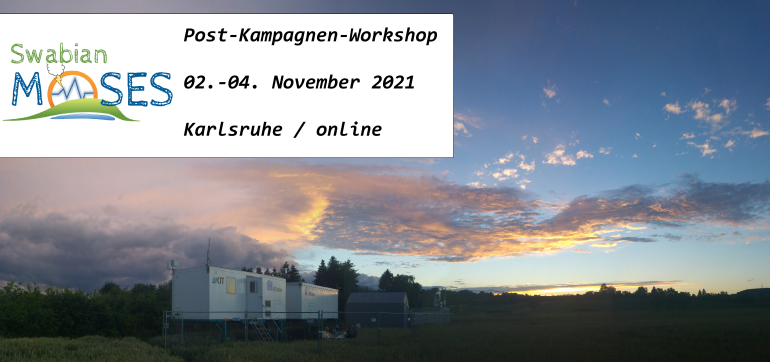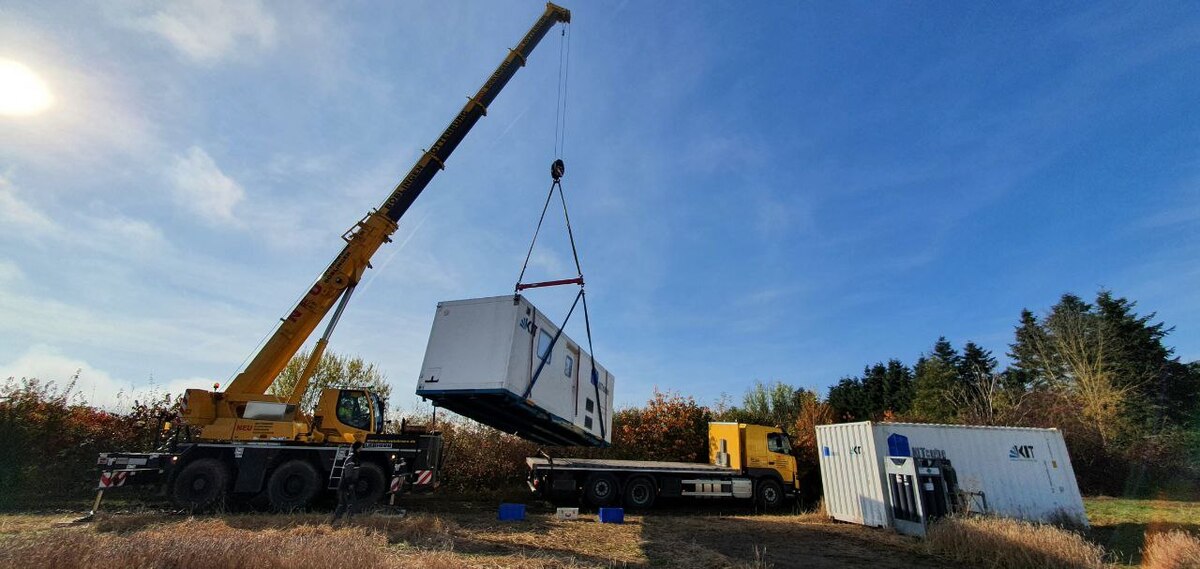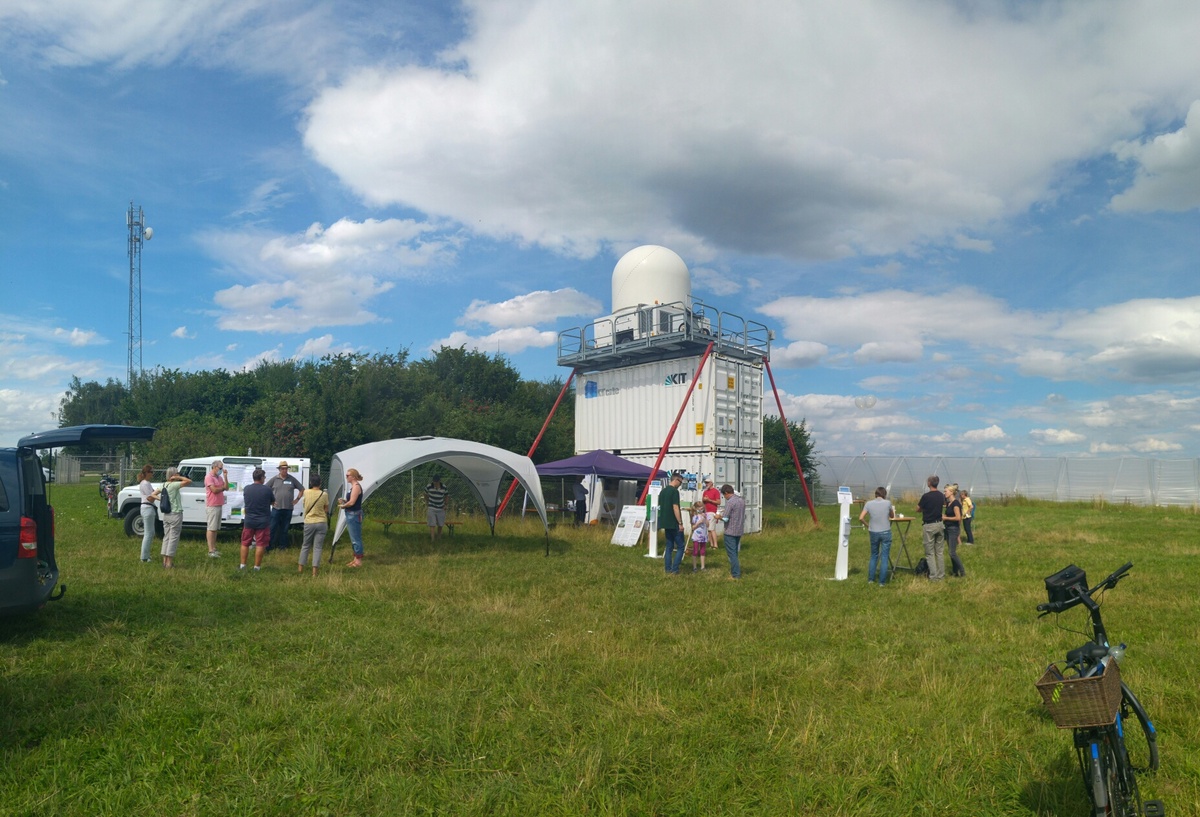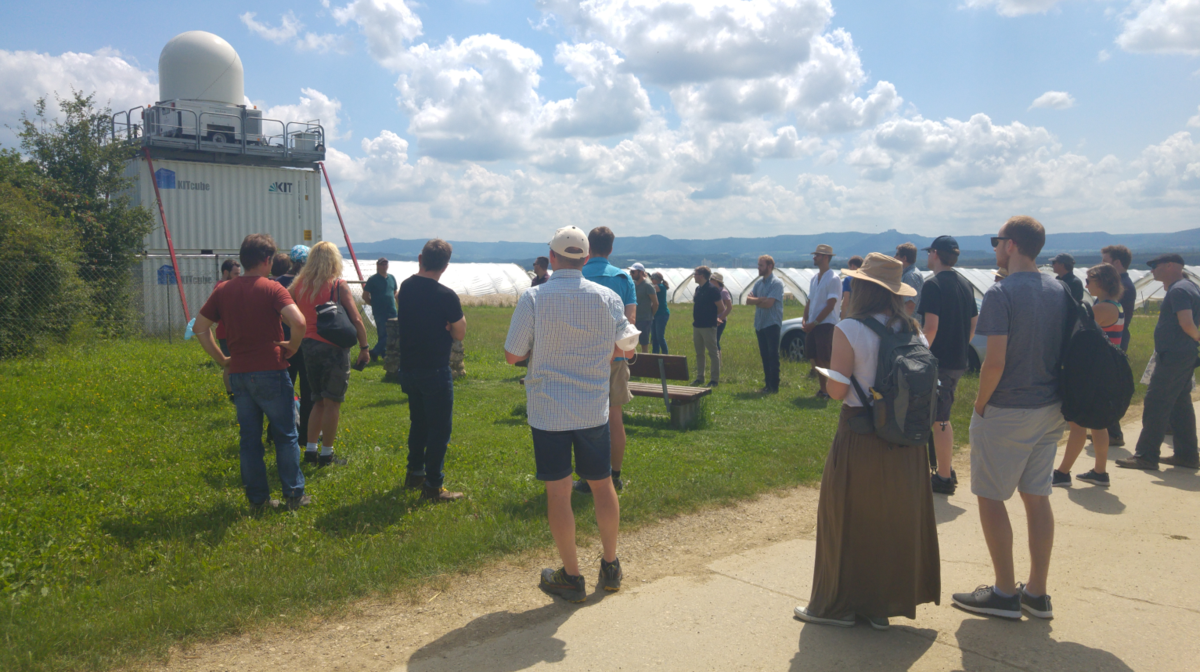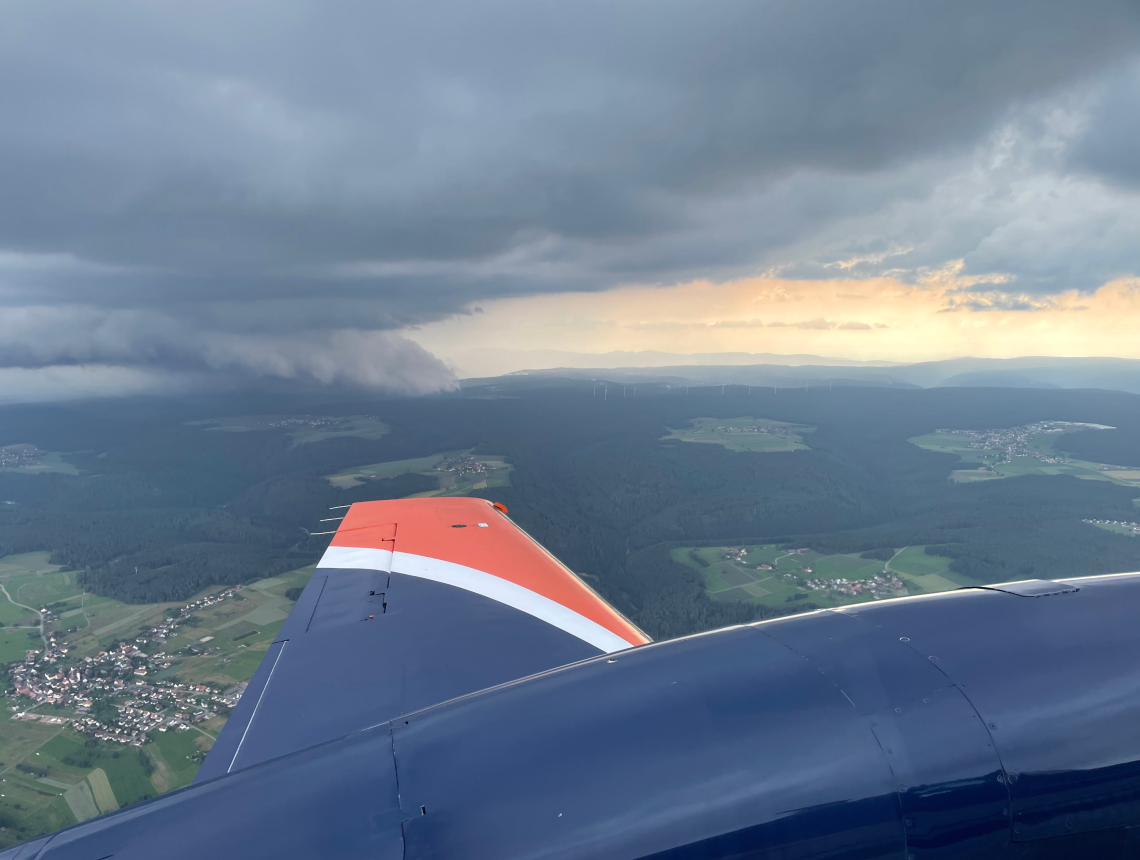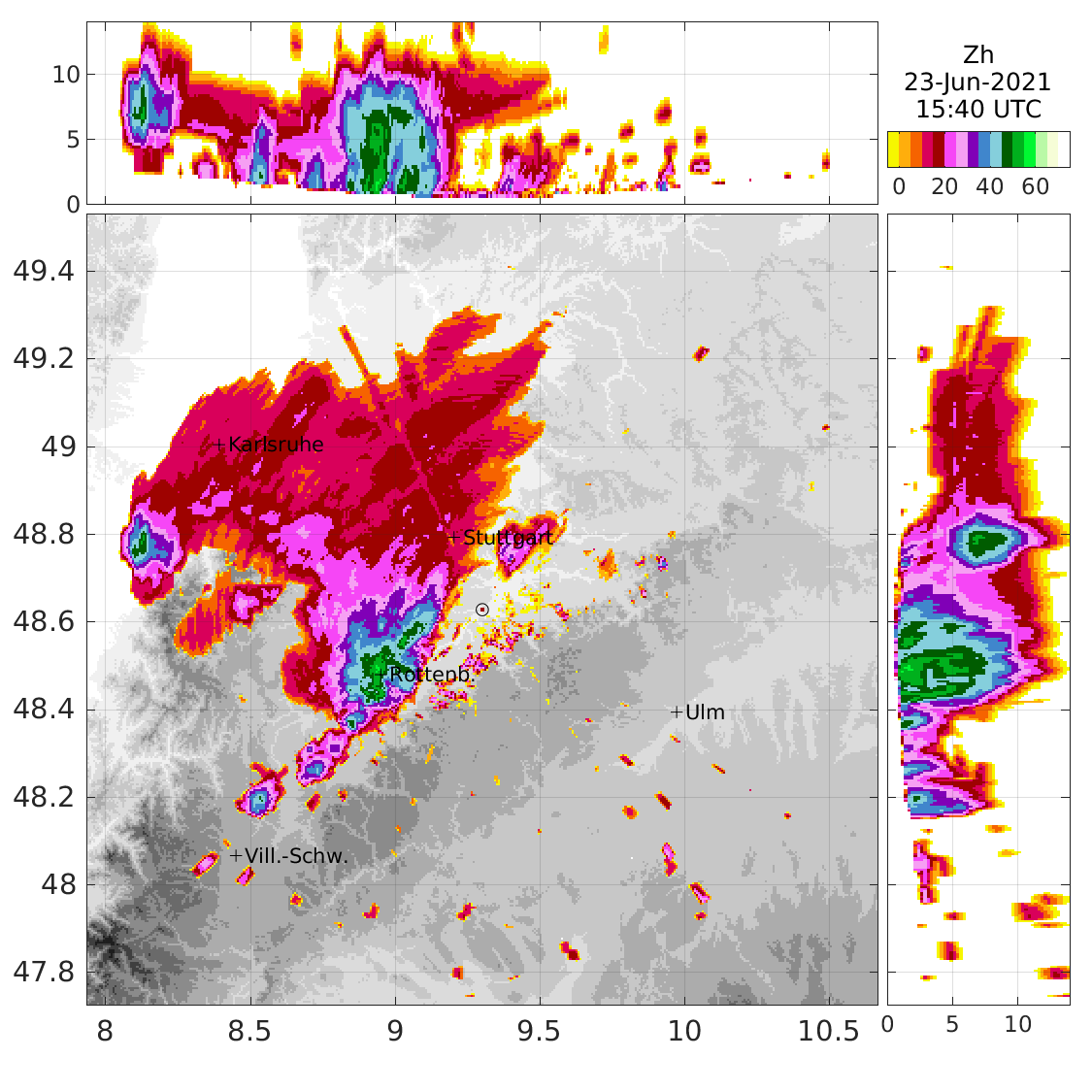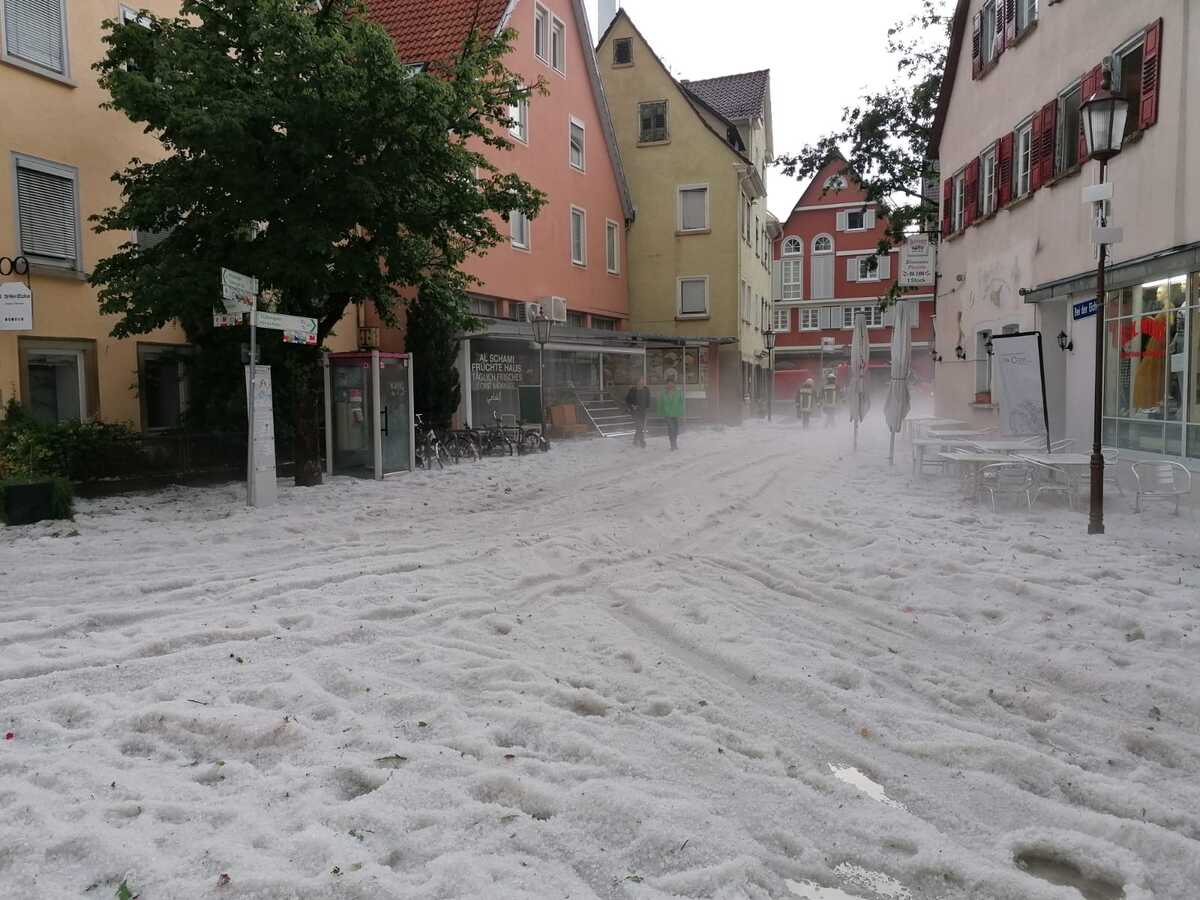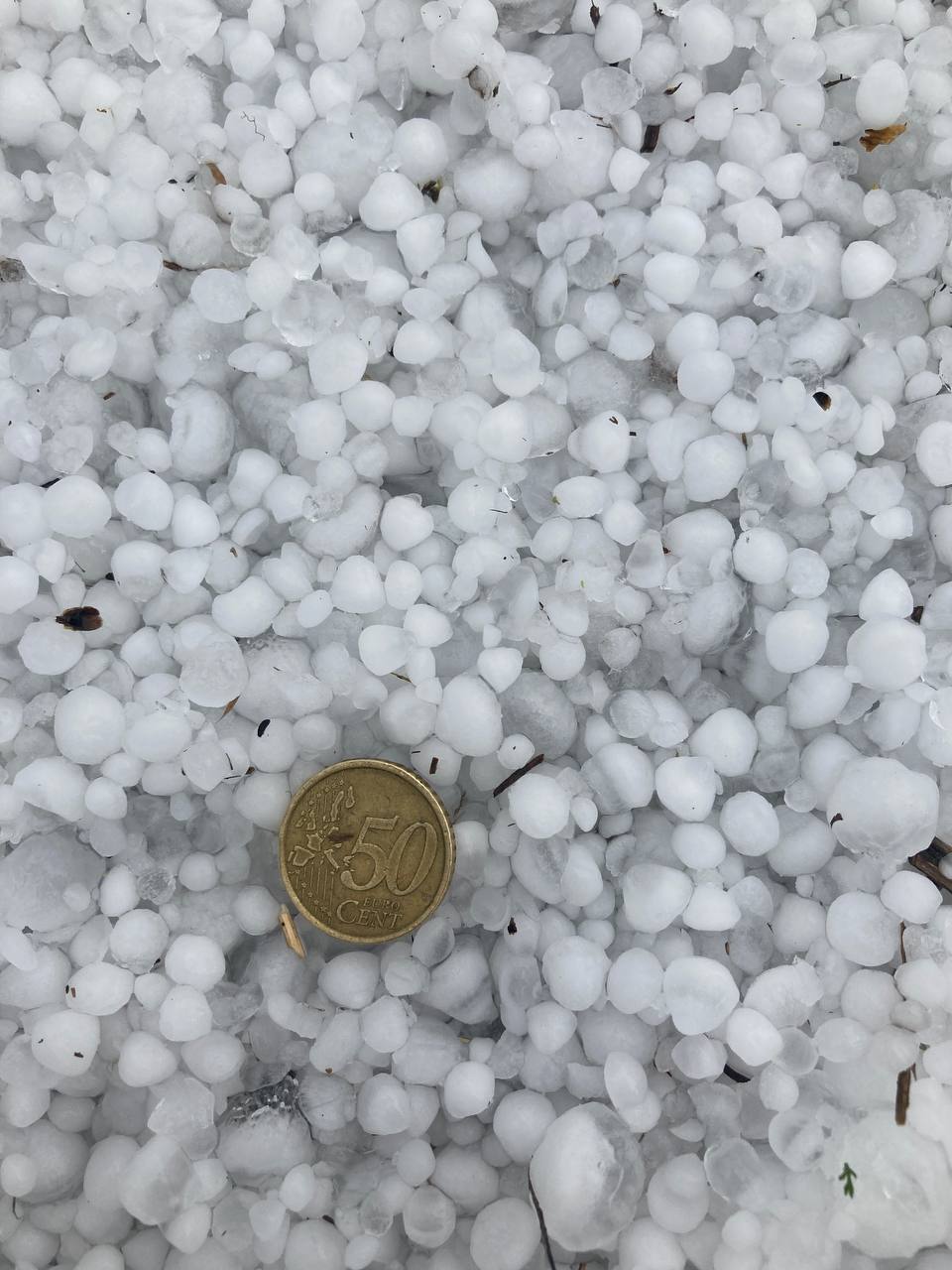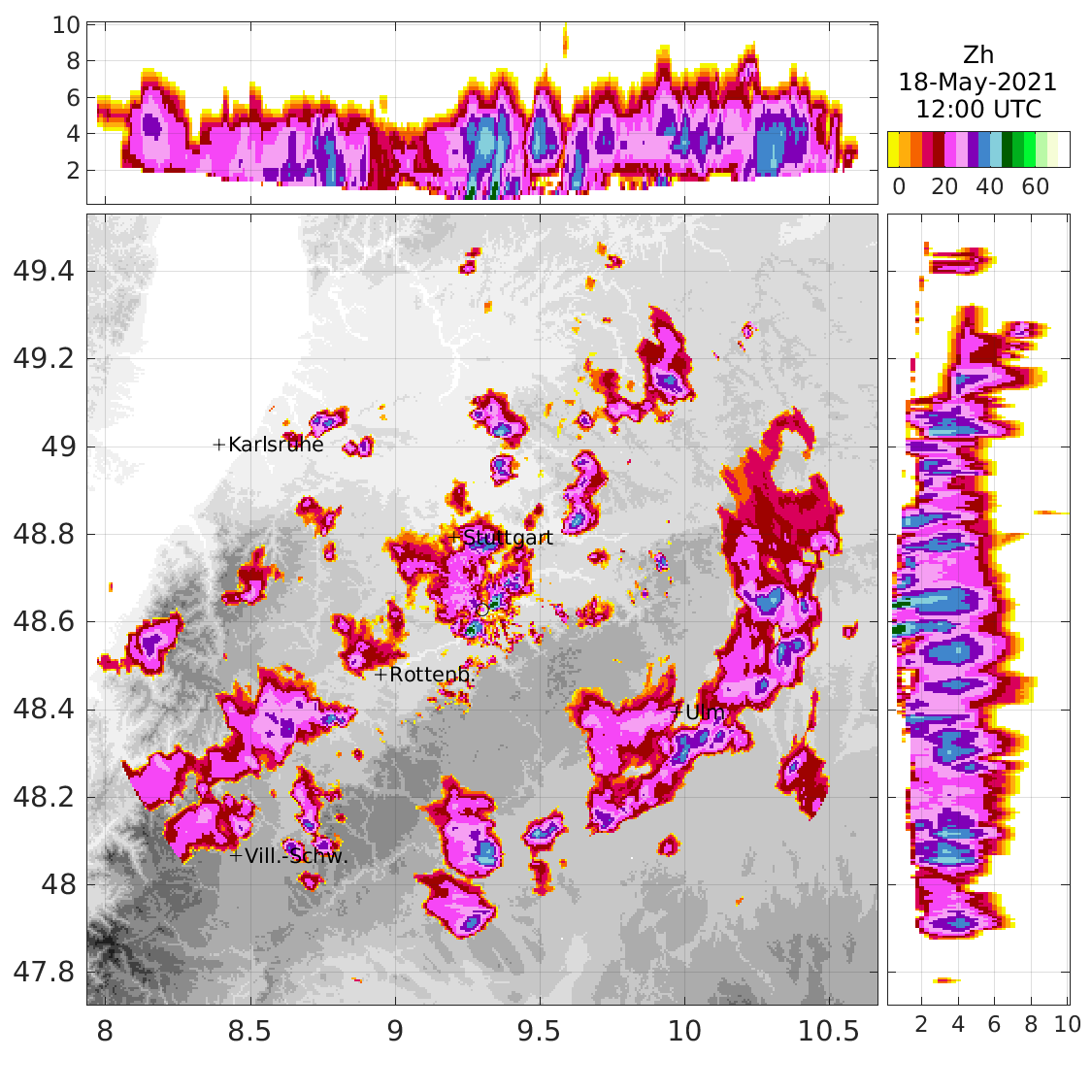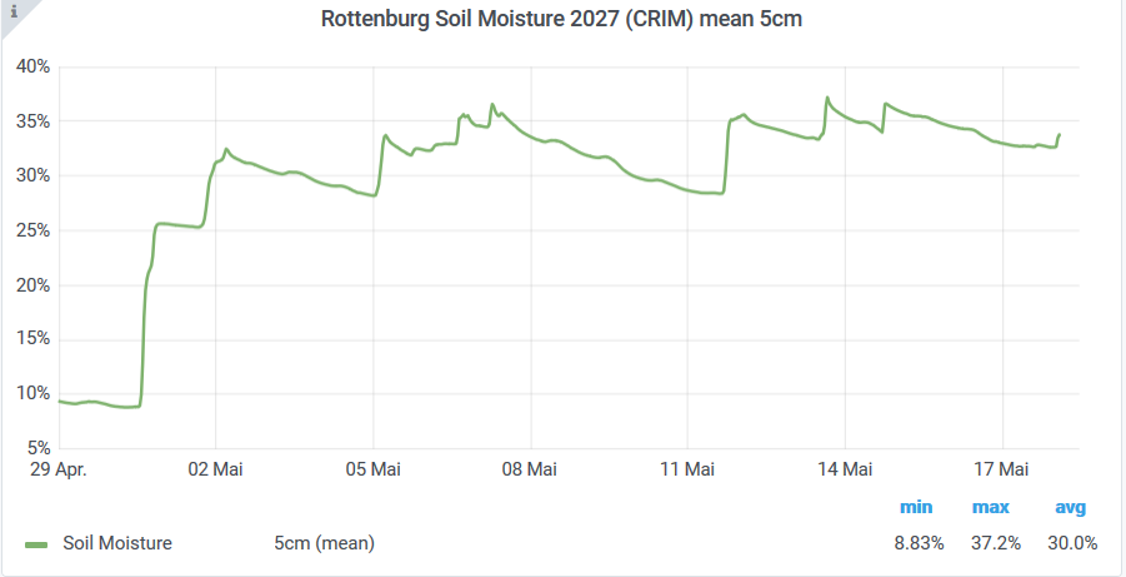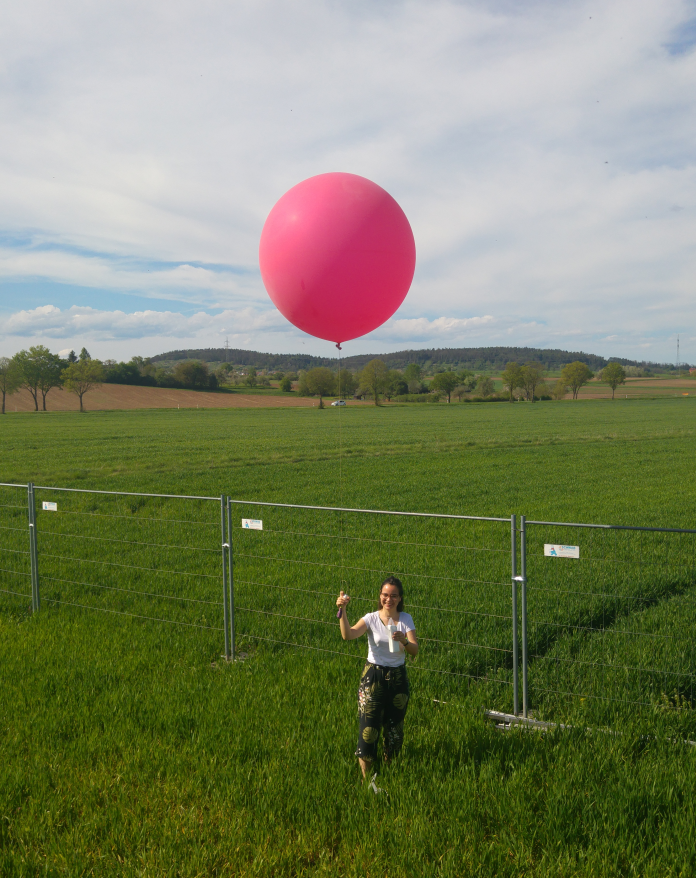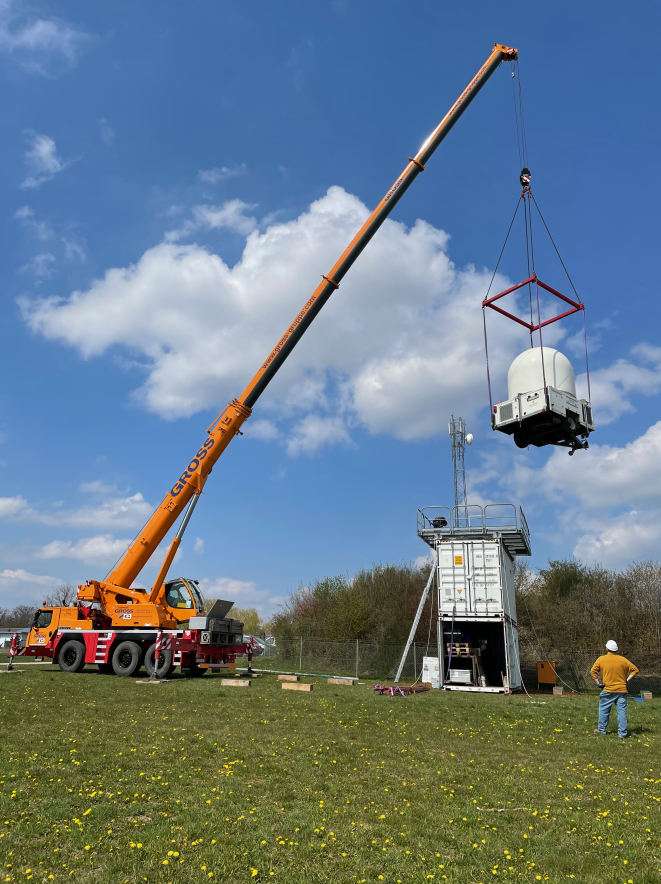News
Here you find news from the measurement campaign team in chronological order. Detailed articles published on the MOSES blog are marked with [BLOG].
Click on the respective news to see more details.
04/11/2021: Three-day post-campaign workshop carried out at KIT
From 02 to 04 November 2021, the first post-campaign workshop of Swabian MOSES took place. At the hybrid event, about 40 participating researchers from the participating institutions came together at the Campus North of KIT in Karlsruhe or online to draw a first résumé. After some overview presentations about the embedding of the campaign into the Helmholtz initiative MOSES, the research goals of Swabian MOSES and the campaign progress by the project management and coordination, all participating measurement groups gave their first evaluations. Modelers from the Institute for Meteorology and Climate Research (IMK-TRO) of KIT and the German Weather Service (DWD) presented their approaches and ideas for linking the measurement data collected by Swabian MOSES with model simulations in order to learn even more about atmospheric processes. Afterwards, intensive discussions were held in thematic small groups and a strategy for efficient and joint analysis and publication of the measurements was developed. Finally, the participants of the workshop exchanged views on future perspectives of Swabian MOSES. The proposal of a second edition of the campaign with further hydro-meteorological research foci in 2023 met with open and interested ears from many participants.
Author: Dr. Jannik Wilhelm (IMK-TRO)
27/10/2021: Dismantling of measuring devices largely completed
After five months of continuous measurements, most of the measuring instruments of the Swabian MOSES participants have been dismantled over the past four weeks. Despite the partly wet and cool weather, the dismantling went smoothly and the well-coordinated teams were able to safely stow the measuring instruments. Some of the equipment and materials have already been transported back to their home facilities, where they will undergo extensive maintenance and functional checks.
Author: Dr. Jannik Wilhelm (IMK-TRO)
11/09/2021: Swabian MOSES in Bavarian TV program (Bayrischer Rundfunk, "Gut zu wissen")
Today, a documentary about Swabian MOSES was shown in the well-known television broadcast "Gut zu wissen" ("good to know") in Bavarian TV (Bayrischer Rundfunk): LINK to online media center (German only)
18/08/2021: Swabian MOSES - Video report at WetterOnline
WetterOnline reports about the measurement campaign, in particular about the focus on hail research: LINK
18/08/2021: [BLOG] Great interest in the Swabian MOSES campaign open days
MOSES blog post: LINK
01/08/2021: Open days in Nürtingen and Rottenburg am Neckar with many visitors (posters inside)
Poster: Radiosoundings | Poster: Aerosol lidar | Poster: Aerosol measurements | Poster: INP measurements | Poster: Stormchasing | Poster: Thunderstorm and hail frequency (German only)
On the weekend of 31 July / 01 August 2021, scientists from the research institutions involved in the Swabian MOSES campaign provided interested people an insight into their work and research goals. In compliance with the current Covid-19 regulations, MOSES project coordinator Dr. Ute Weber and Swabian MOSES coordinator Jannik Wilhelm welcomed more than 100 interested people and members of the press over the course of two days and gave an overview of the overall concept of the measurement campaign. Eight leading scientists of the campaign presented current results and research foci.
Highlights of the events included demonstrations of the swarm probes by the stormchasing team, several joint preparations and launches of weather balloons, the presentation of the UFZ rover for the measurement of soil moisture, as well as insights into the ensemble of aerosol measurements, heavy rainfall sampling of the University of Tübingen and the sensors of energy balance stations run by the IMK-IFU. The control unit of the mobile observation system KITcube could also be visited in Rottenburg. The researchers were very pleased with the great interest and exchange about weather extremes, climate change and more. Especially in Rottenburg, numerous guests came to the measuring station by foot or by bicycle, despite rainy weather, to inform themselves about the current research.
At the same time, the open days marked the end of the intensive measurement phases during thunderstorm events. However, many continuously observing measuring instruments will remain at the locations shown in the interactive measuring area map until the beginning of October in order to collect further exciting data for weather and environmental research.
Author: Jannik Wilhelm (IMK-TRO)
07/24/2021: Intensive Measurement Phase 7 (IOP 7) starts today!
Today and tomorrow, researchers again expect thunderstorms in the study area. The Swabian MOSES teams of Forschungszentrum Jülich (balloon soundings in the lower stratosphere) as well as IMK-TRO (storm chasing, radiosonde ascents) and IMK-AAF (aerosol measurements) will be in action.
23/07/2021: Swabian MOSES - In own business
In recent weeks, the Swabian MOSES team has not only observed many storms but was also able to collect valuable data in Baden-Württemberg. The scientists emphasize that they take the dangers and damage caused by storms very seriously at all times and express their sympathy to all those who have been affected by hail damage, heavy rain, flash floods or other accompanying phenomena during the recent weeks. One of the campaign's research goals is to improve the temporal and spatial accuracy of forecasts of severe thunderstorms such as the one in the Neckar valley on 23 June - even though this is a major challenge due to the chaotic nature of the atmosphere. However, with the observations from the campaign, an important step has been taken that can lead to more precise forecasts in the long term.
Public and press interest in the campaign is increasing. Several television reports (SWR Aktuell, SWR Landesschau; BR24 Rundschau) as well as various newspaper, online and radio interviews (FAZ, SWR, MDR, rbb, Deutschlandradio, Reutlinger Generalanzeiger, Nürtinger Zeitung, Schwäbisches Tagblatt, Badische Zeitung, Badische Neueste Nachrichten, Stuttgarter Nachrichten, Stuttgarter Zeitung) with those involved in the campaign have already been published.
Author: Jannik Wilhelm (IMK-TRO)
19/07/2021: Sightseeing tour with the German Weather Service
Today, many KIT participants of the measurement campaign Swabian MOSES met with researchers and employees of the German Weather Service (DWD) as well as with scientists from the Collaborative Research Centre Waves To Weather on a tour to the measuring stations in Owen (Teck), Nürtingen and Rottenburg am Neckar. In addition to the project management and coordination of Swabian MOSES, the institute management and management of the IMK-TRO as well as the project management and coordination of the DWD project SINFONY (Seamless INtegrated FOrecastiNg sYstem) were also on site. New points of contact were identified and ideas developed as to how researchers can make further progress in thunderstorm forecasting in the future.
Author: Jannik Wilhelm (IMK-TRO)
12/07/2021: Intensive measurement phase 6 (IOP 6) starts today! - Heavy thunderstorms with high rainfall possible.
Today, the researchers expect heavy thunderstorms, especially in the course of the evening and at the beginning of the night, which will soon merge (as in IOP 5) into a mesoscale convective system in the study area in Baden-Württemberg. Due to the good thermodynamic, very good dynamic atmospheric conditions (e.g. very high vertical wind shear), there is the possibility for the formation of supercells, including hail. Later during the night mainly heavy rain is expected. The moisture content of the air is enormous: the precipitable water in a vertical air column reaches extremely high values up to more than 40 kg/m².
The Swabian MOSES teams of Forschungszentrum Jülich (balloon soundings in the lower stratosphere) as well as IMK-TRO (stormchasing, radiosonde ascents) and IMK-AAF (aerosol measurements) are again in action.
Author: Jannik Wilhelm (IMK-TRO)
28/06/2021: Intensive measurement phase 5 (IOP 5) starts today! - Large thunderstorm complexes are likely.

Today and tomorrow, the researchers expect large thunderstorm systems (so-called mesoscale convective systems) in the study area in Baden-Württemberg, which can form line-like thunderstorm fronts. The Swabian MOSES teams at the University of Tübingen are on alert due to the high expected precipitation totals. Also the teams of the Forschungszentrum Jülich (balloon soundings in the lower stratosphere), the UFZ (Cosmic Ray Roving) as well as the IMK-TRO (stormchasing, radiosonde ascents, aircraft measurements with the TU Braunschweig) and the IMK-AAF (aerosol measurements) are deployed.
The Bavarian Broadcasting Corporation (BR) will also be on site on Monday to follow the activities of the researchers.
Author: Jannik Wilhelm (IMK-TRO)
25/06/2021: [BLOG] Swabian MOSES collects unique data during severe storms
MOSES blog post: LINK
25/06/2021: Swabian MOSES at SWR Aktuell
During this stormy week the SWR reports on radio and television about the Swabian MOSES measurement campaign. A compilation can be found HERE.
24/06/2021: Swabian MOSES team issues expert report on yesterday's hailstorm in Neckar valley
Link to the expert report: CLICK HERE
23/06/2021: [BREAKING NEWS] Supercell with hail passes over the main measuring site Rottenburg am Neckar!
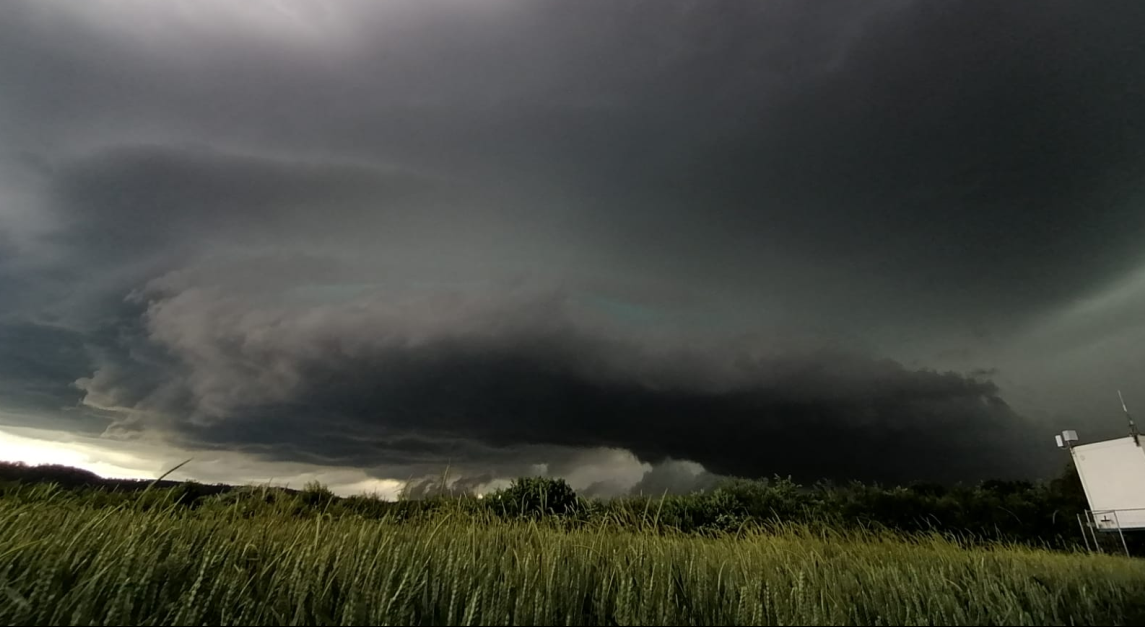
Around 17:40 local time (15:40 UTC), a severe thunderstorm, a so-called supercell, passed directly over the main measurement site in Rottenburg am Neckar today (see photo and radar image). Besides strong convective wind gusts, the supercell also produced hailstones, which reached diameters of up to 2 centimeters directly at the measuring station. In Rottenburg's city centre, the hail stones made the streets look almost like winter (see photo). According to still unconfirmed reports, but partly documented with photos which were received by the German Weather Service or the campaign team, hailstones locally reached diameters of 5 centimeters in the direct environment along the Neckar (Tübingen, Reutlingen) - this corresponds to the size of a golf ball (see photo).
Today's supercell thus joins a whole series of supercells in southern Germany, which have been forming since Monday, especially in Baden-Württemberg and Bavaria, and which cross long distances, sometimes several hundred kilometres, with their damaging accompanying phenomena. One is already clear: Measurements and data from the supercells obtained today will provide scientists with very valuable information to better understand the frequent occurrence of these storms in the region. This will also help to improve forecasts of such events in the future.
Further information will soon be provided.
Author: Jannik Wilhelm (IMK-TRO)
17/06/2021: Intensive measurement phase 4 (IOP 4) starts today! - Severe thunderstorms are possible in the next few days.
We are currently in the first heat wave of this summer, lasting several days. Hot air from northern Africa is advected towards Germany via the Mediterranean Sea (and also brings some Sahara dust). Already today the daily highs - except for the higher low mountain ranges - will reach more than 30 °C, locally even around 35 °C. These high temperatures will make us sweat a lot until Sunday, especially as the humidity will increase significantly from Friday onwards.
In the Swabian MOSES study area in Baden-Württemberg, several thunderstorms are expected for Friday, 18.06.21, which will bring locally heavy rain and small-grained hail due to the very good thermodynamic atmospheric conditions (high instability, high water content, high energy content). In addition, dynamic conditions will improve over the weekend, allowing for a better organisation of thunderstorms. In some cases, extensive complexes of severe thunderstorms can develop. The intensity of Saharan dust impacting the development of thunderstorms is uncertain.
The following Swabian MOSES teams are involved:
- KIT/TU Braunschweig flight team: the D-IBUF research aircraft, which will fly various flight patterns over the next few days to measure flow conditions in the study area in advance of the thunderstorms.
- KIT stormchasing team, which will fly to strong thunderstorm cells to steer small swarm probes into the upwind region of the cells to learn more about the dynamics of the thunderstorm and the hail growth.
- KIT radiosonde teams launching weather balloons to probe the vertical profile of the atmosphere up to an altitude of 15-20 kilometres.
- DLR flight team and UFZ team "Cosmic Ray Sensor" for coordinated airborne and ground-based measurement of soil moisture before and after the thunderstorm period.
- Weather balloon team of the Research Centre Jülich for measuring the trace gas transport into the stratosphere by thunderstorms (balloon ascents up to heights of more than 30 kilometres).
- KIT aerosol team for the regular collection of aerosol particles on site to investigate their role in thunderstorm formation.
- Flow team of the University of Tübingen is on alert and waiting to be deployed in case of a local heavy rain event in the catchment area of the rivers Ammer and Steinlach.
- DWD radiosonde team Stuttgart: Additional automated weather balloon ascents in the morning and afternoon during the IOP.
SWR will also be on site during two days to get a close-up view of the researchers' activities.
Author: Jannik Wilhelm (IMK-TRO)
09/06/2021: Intensive measurement phase 3 (IOP 3) starts today!
Today, the researchers expect the triggering of several high reaching and slow moving thunderstorm cells in the study area in Baden-Württemberg. The Swabian MOSES teams of the University of Tübingen and the Research Centre Jülich are deployed to measure the water inputs into the stratosphere and the heavy rain-induced pollutant transport into the local watercourses.
02/06/2021: Intensive measurement phase 2 (IOP 2) starts today!
After a cool and rainy May, early summer is returning to Germany for a few days. Temperatures will rise to more than 25 °C today. In addition, a humid-labile air mass from the southwest of France will enter the study area in Baden-Württemberg during the day. As a result, the first thunderstorms have already formed in the afternoon (16:20) over the Vosges and the Black Forest. The Swabian MOSES teams are ready and are already releasing the first weather balloons to probe the atmosphere.
21/05/2021: Cool and changeable weather so far prevents strong thunderstorms in May
After April 2021 has been the coldest April in Germany since 40 years (cf. DWD), May 2021 is also cool and unsettled so far. Frequent, often showery rainfall during the past weeks can be attributed to an extensive low-pressure system over the North Atlantic, which continuously transported moist air masses to Central Europe. Especially due to cold air advection in the upper layers of the troposphere, this showed a slightly to moderately unstable stratification during many days, which repeatedly led to triggering and development of convection in Germany and also in the study area Neckartal/Schwäbische Alb. However, this convention was mostly weakly organised, not high reaching (s. Radar image of the KITcube X-band radar) and therefore only characterized by moderate accompanying phenomena (heavy rain, small-grained hail, squalls, little lightning activity). In the Swabian MOSES study area, around 60 to 100 litres of rain per square metre have been recorded since the beginning of May, which is in or only slightly above the climatological average. The soils, which were still widely dry in April, have moistened in recent weeks due to the recurring rainfall, as shown by the soil moisture measurements of the UFZ (see time series).
Concerning the focus on the investigation of the development of summerly, deep convection by flow convergences in the investigation area, or the pollutant transport into watercourses by heavy rain, the weather so far provided no opportunity for a scientifically interesting intensive measuring phase. The cool and changeable weather will continue during the upcoming week, although increasingly high air pressure will dominate over the Atlantic. This will result in a northerly flow over Germany, which will advect warmed polar air and will prevent further summerly weather. Besides this, May typically marks the beginning of the thunderstorm season. Thunderstorm statistics from the last 20 years indicate an increase in the frequency of thunderstorms in the study area throughout June until around mid-July, so that researchers are expecting several exciting thunderstorms in June.
Author: Jannik Wilhelm (IMK-TRO)
10/05/2021: Intensive measurement phase 1 (IOP 1) - Test of the measurement systems successful
Since the start of the campaign, many measuring systems are providing continuous measurements of various hydro-meteorological parameters. If a severe thunderstorm situation, a pronounced flood or a prolonged heat and drought period is developing, intensive observation periods (IOPs) will be called during the next months, during which the researchers will carry out additional observations with several measuring systems. In order to test the team communication and the use of different measurement instruments under IOP conditions, a first test IOP took place on 10.05.21.
Two measurement teams of the IMK-TRO successfully carried out several balloon soundings with radiosondes attached to weather balloons to measure the vertical profile of air temperature, humidity and wind field at the KITcube main site Rottenburg am Neckar as well as at the KIT Campus North in Eggenstein-Leopoldshafen (see photo). In the study area, there were only single weak rain showers on 10.05.21, which were registered as planned by the KITcube measurement ensemble in Rottenburg as well as at the site of the LAFO of the University of Hohenheim with their radar systems. Longer lasting rainfall in the study area on 11 and 12 May 2021 with 24-hour rainfall totals of 10-25 litres per square metre showed a significant increase in soil moisture in the measurements of the UFZ soil moisture sensors.
Author: Jannik Wilhelm (IMK-TRO)
04/05/2021: [BLOG] Swabian MOSES measurement campaign starts
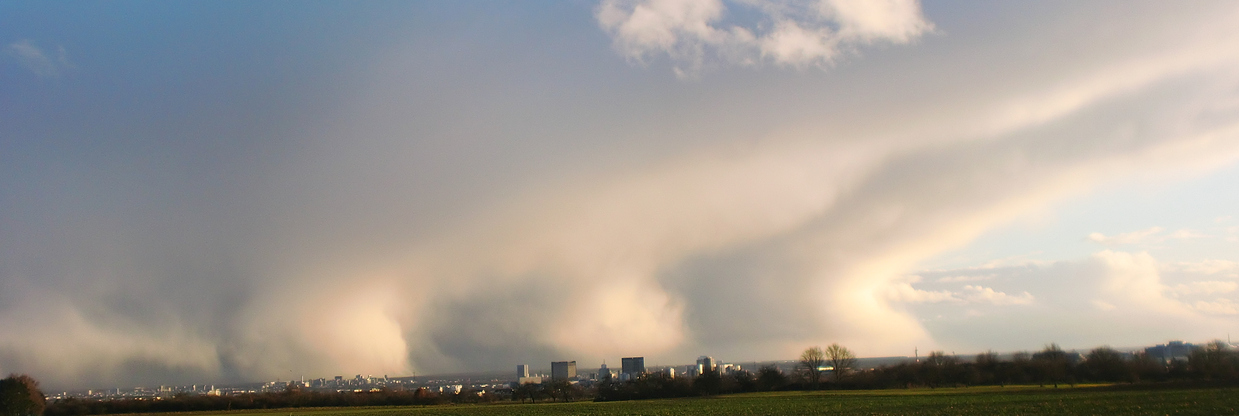
Today, on this stormy 4th of May 2021, the measurement campaign Swabian MOSES starts. Most of the measuring instruments are installed at the respective sites, the data flow is largely organized and the participating scientists are motivated and excited about the hydro-meteorological events they will face in the coming months.
MOSES blog post: LINK
MOSES News: LINK
Link to the official press release on the campaign launch: LINK
21/04/2021: Construction work in full swing - Nürtinger Zeitung reports
The setup work of the Swabian MOSES campaign is in full swing! The teams have already reached many of the measuring locations, deployed the corresponding measuring devices and put them into test operation.
During the setup of the KITcube X-band rain radar in Nürtingen (see photo) on 20 April 2021, some representatives of the press and a TV crew were on site. Today the Nürtinger Zeitung reports in a short article about the installation: LINK to the newspaper article.
Author: Jannik Wilhelm (IMK-TRO)

